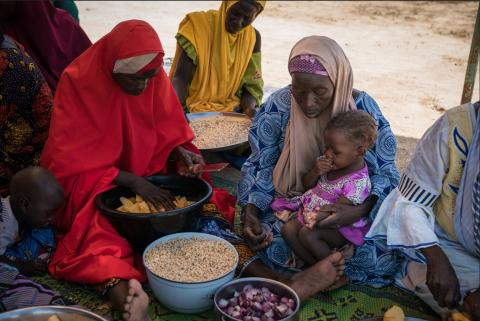Wasting treatment: The effectiveness and coverage of a simplified protocol in Niger
This is a summary of the following paper: Charle-Cuéllar P, Lopez-Ejeda N, Gado A et al (2023) Effectiveness and Coverage of Severe Acute Malnutrition Treatment with a Simplified Protocol in a Humanitarian Context in Diffa, Niger. Nutrients, 15, 8, 1975. https://doi.org/10.3390/nu15081975
A non-randomised community-controlled trial assessed the effectiveness and coverage of a simplified combined protocol for treating severe wasting in children aged 6–59 months, in the humanitarian context of the Diffa region, Niger.
In both the control and intervention groups, severely wasted children received outpatient treatment at health centres and health posts, provided they had no medical complications. In the control group (n=174), the standard community-based management protocol was applied. The intervention group (n=406) followed a simplified protocol (ComPAS1) admitting children based on mid-upper arm circumference (MUAC) < 115mm or oedema presence and treating them with a fixed dose of ready-to-use therapeutic food (RUTF). Children weighing above 5kg received two sachets a day, while children weighing less than 5 kg received a reduced dose of 500 Kcal/day (one sachet a day) in order to not markedly exceed the standard Niger protocol. Children were discharged from the intervention group when their oedema resolved and their MUAC reached ≥125 mm for two consecutive weeks.
To ensure comparability between groups, a socioeconomic questionnaire was administered to a subset of caregivers who coincidentally brought their children for treatment on the same day of data collection; this amounted to 117 caregivers from the control group and 251 from the intervention group. This questionnaire gathered data on demographics, livelihood, food security, and dietary diversity. The coverage of severe wasting treatment at both the study's outset (November 2020) and conclusion (August 2021), in both study areas, was evaluated using standardised (SLEAC2) methodology.
Study groups had comparable average ages, age distributions, sex ratios, and demographics. No cases of oedema were recorded in either group. The intervention group showed a higher cure rate (96%) compared to the control group (87.4%) (p<0.001). There was no difference in the average length of stay (35 days), but the intervention group used fewer RUTF sachets per cured child (70 vs. 90) (<0.001). Discharge errors (the number of children who were discharged considered cured before having reached the relevant criteria) were significantly lower in the intervention group compared to the control group (3.2% vs 10.9%). Both groups experienced increased coverage.
The study had limitations, notably the absence of randomisation and an imbalance in group sizes. However, robust statistical tests were used to address this imbalance. The study also highlighted challenges related to health facility overload and access issues due to flooding, affecting the reach of children in need to treatment sites.
These findings complement those of a previous study in the Niger context, which explored a different simplified approach led by community health workers. Both studies offer insights for policymakers considering the adoption of simplified approaches, particularly in exceptional circumstances such as those in Diffa, to enhance the effective treatment of more children.


